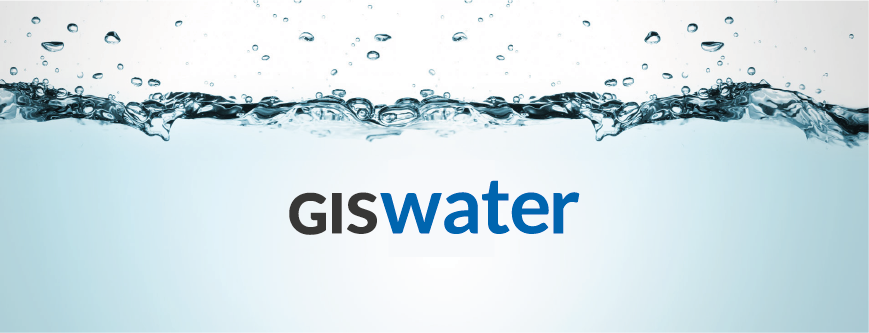Giswater is an open-source project software created having in mind sharing knowledge in the sectors related to water supply, sewerage systems, urban drainage and the investigation of flood risks by acting like a linking platform between hydraulic simulation software, spatial database and Geographic information Systems(GIS) software.
MAIN BENEFITS
1. Development of master plans of water supply, sewerage and drainage systems incorporated with Geographic Information Systems (GIS) without any license costs.
2. Potential to develop master plans using only one platform which is 100% open-source software, with all the elements developing water management systems of water supply network and sewerage network such as EPANET, EPA SWMM, GIS, BBDD, WMS, ERP, CRM, mobile devices or SCADA’s.
3. Potential of collaborative projects in such a way that even expensive proprietary software could not perform up to date. Large hydraulic engineering projects were either carried out in a sequential or a fragmented manner. This approach of database multi-use would make it possible to work on a real cooperative manner due to the fact of accessing the database simultaneously and independently on the number of users.
4. The possibility of the technological dominance of the user is becoming a reality due to knowledge sharing which is the main characteristic of Giswater. The key element is that the end-user is no longer dependent of the technology and its suppliers, but rather on the training they receive.
5. A project which brings together different technologies which are clearly tested and proved reliable such as QGIS, PostgreSQL, EPA NET, EPA SWMM with thousands of users all over the world improving and accelerating progress in the respective communities.
COST
Although Giswater project and all the technologies associated with its use are 100% open-source, signifying ZERO license costs, it is evident that there are other costs associated with its use. These costs include training and project consulting at a fixed price quotation.
Comparing these costs with the cost of licenses of proprietary software available at the market, we could account for 20,000€ for a single license. In order to have more than one user, an organization needs to pay for each license separately. The cost for licenses and maintenance are very high.
TECHNOLOGY
Giswater is a driver which connects with any spatial database through EPANET, EPA SWMM and HEC-RAS. Being developed in Java, it gives the opportunity to develop into a multi-platform software (UNIX, MS or MAC). Meanwhile the project revolves between correlated databases, the programming language SQL becomes a key element not only for developers, but also for experienced users.
Even tough Giswater could connect to any spatial database and given the fact that PostgreSQL is an extremely robust widely used 100% open-source database, it is recommended to use it for Giswater projects.
Considering the GIS connecting to the spatial database and using the same approach when considered the spatial database, QGIS is the ideal GIS software to connect to the spatial database. The reasons being that it is widely used and robust as well as being an open-source software and having an excellent connection with PostgreSQL.
DEVELOPMENT AND NEWER VERSIONS
The experience of BGEO (www.bgeo.com) in Open GIS solutions which are focused on urban infrastructure and the knowledge and experience of the GITS-UPC the Research department of computational hydraulics and hydrology of the Polytechnic University of Catalonia (www.gits.com) have jointed forces to create this project.
DISTRIBUTION
The released versions which are distributed by Giswater Association are available to download at www.giswater.org at the DOWNLOAD tab. In this section, there are two versions which could be downloaded, the Giswater-all-in-one installer and the Giswater-stand-alone installer. The Giswater-stand-alone version only includes the software and the Giswater-all-in-one installer which incorporates the PostgreSQL portable which is set up according to Giswater Association team requirements.
POTENTIAL USERS
Potential users could come from several disciplines, however the majority of the existing users are:
– Engineers working with master plan drafting for water supply, sewerage and urban drainage systems as well as the assessment of fluvial flood risks, considering that Giswater could contribute to their professional training, competitiveness and guaranteed opportunities.
– Water management companies who want to improve the performance and efficiency of their services by integrating the I.C.T (Information and Communications Technology) which are implemented in the organization considering the fact that Giswater could provide a single platform which is interconnected and interoperable.
– Large engineering companies working in large projects. Giswater is the only technological solution which permits real collaborative work in the urban and fluvial hydraulics.
– Local authorities either have to create the master plans or implement them on a digitized format. Giswater gives the opportunity not only to have a digitized format of those maps, but also to include further data and creating dynamic plans.
– Municipal authorities who might have delegated authorization in the management of water supplies, sewerage systems or flood risks could incorporate all the benefits that Giswater has to offer with the different solutions it could give.

